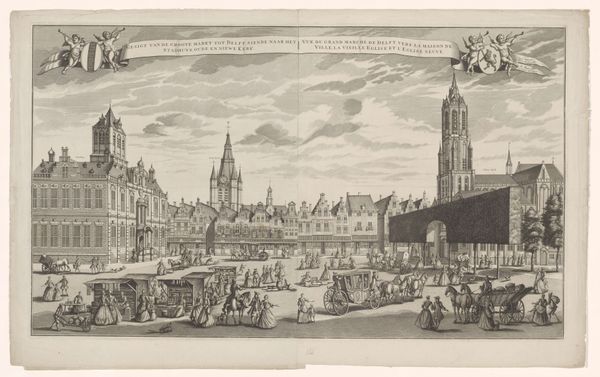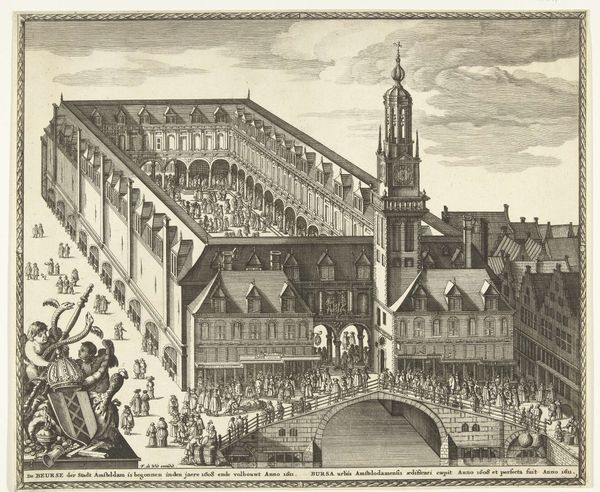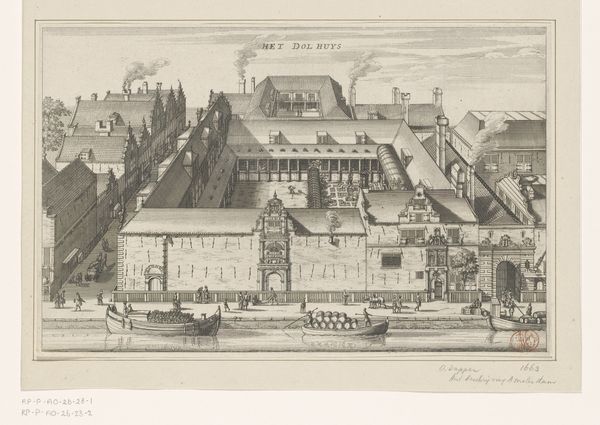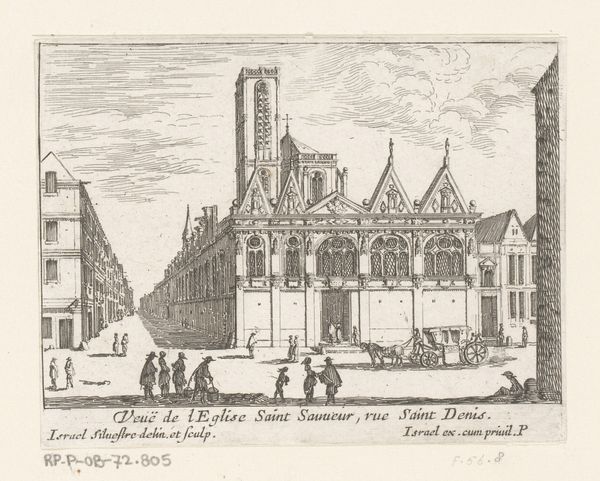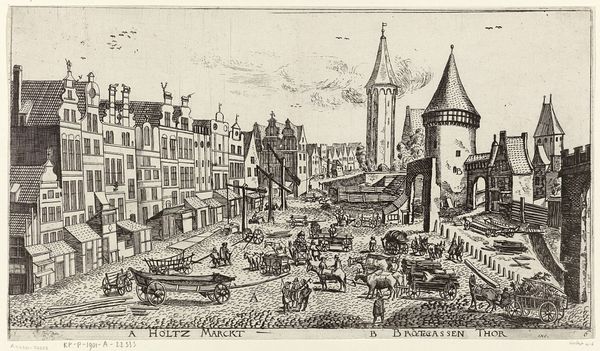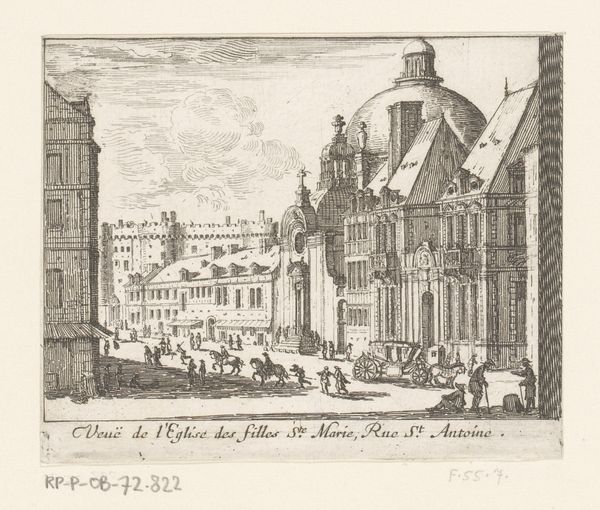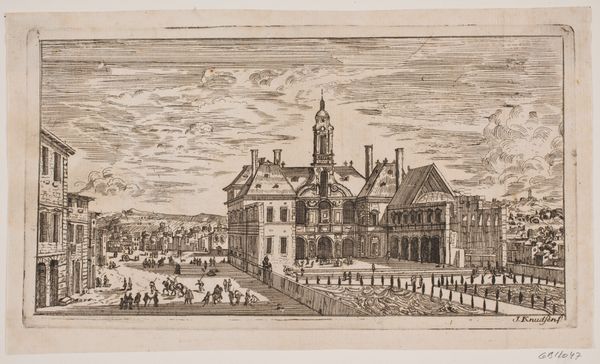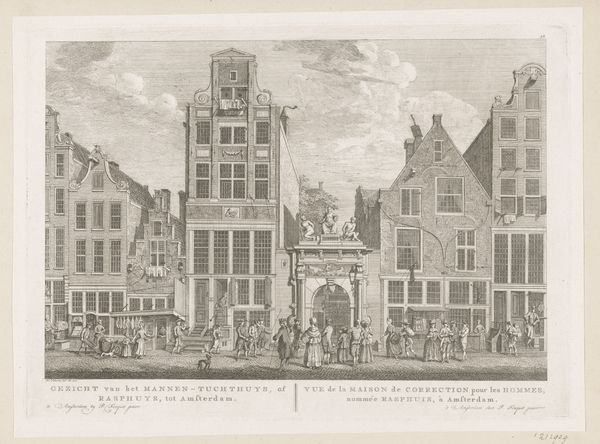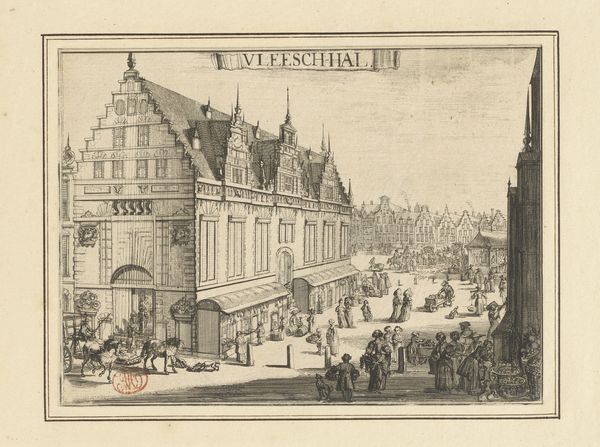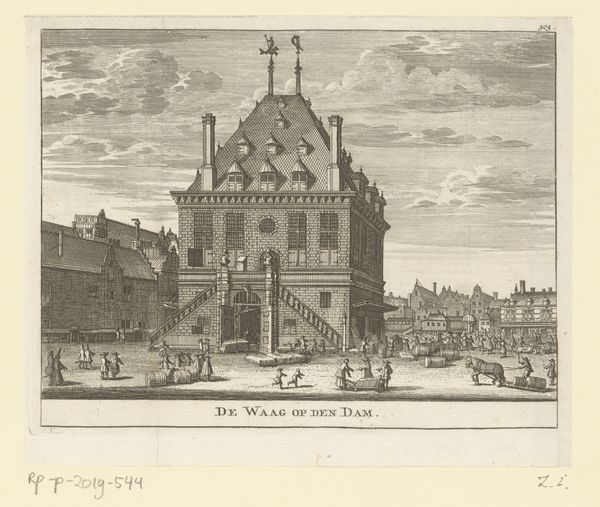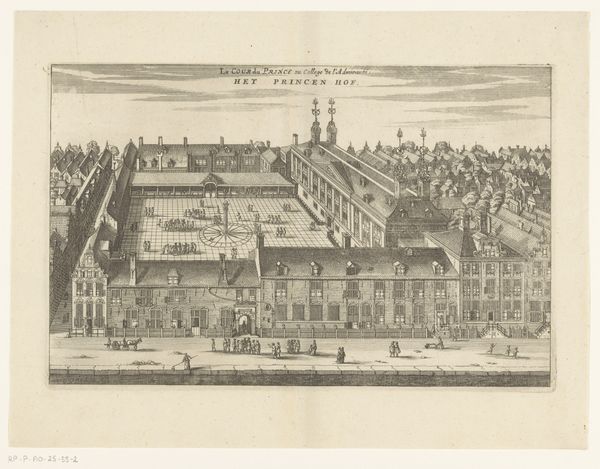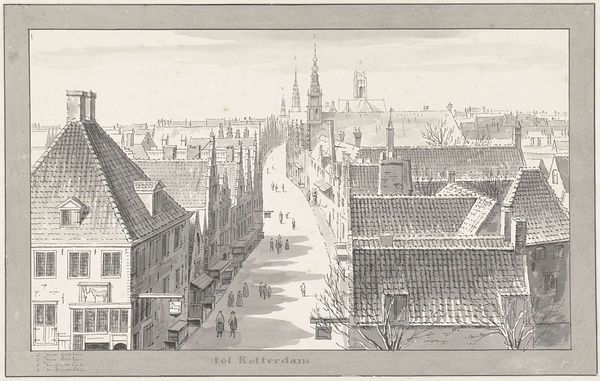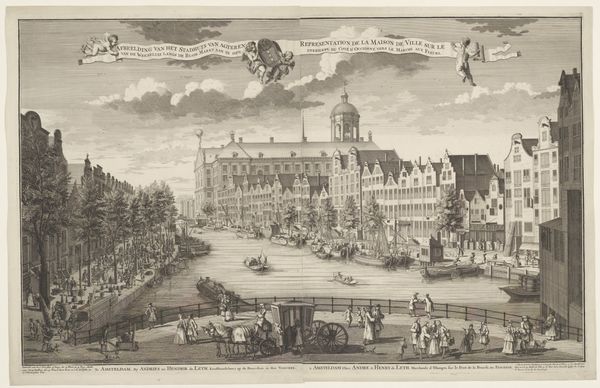
Vogelvluchtgezicht op de Beurs van Hendrik de Keyser te Amsterdam, voor 1668 1663 - 1664
0:00
0:00
jacobvanmeurs
Rijksmuseum
print, engraving, architecture
#
narrative-art
#
baroque
#
dutch-golden-age
# print
#
pen sketch
#
old engraving style
#
perspective
#
line
#
cityscape
#
engraving
#
architecture
Dimensions: height 192 mm, width 296 mm
Copyright: Rijks Museum: Open Domain
Curator: This detailed engraving offers a bird’s-eye view of the Amsterdam Stock Exchange, dating from 1663-1664. Jacob van Meurs is credited with its creation. The precise linework used for the print immediately strikes me as impressive given the breadth of the architectural detail that he captures. What’s your take? Editor: Chaotic. At first glance, it feels densely packed, teeming with life, but almost claustrophobic due to the building’s domineering presence and its sharp angles. The human figures seem somewhat dwarfed, almost lost within the architecture. I want to know what that building actually *is* made of. Curator: Built largely of brick and sandstone, this exchange stood as a testament to Amsterdam’s burgeoning commercial power during the Dutch Golden Age. Considering that trade was booming at this time, the raw materials that came through the port directly funded artwork and structures just like this. Editor: Exactly! The sheer volume of people depicted reinforces that narrative of economic activity. Also notice that elevated, enclosed walkway surrounding the central courtyard. I'm wondering how access was regulated or if social hierarchies were spatially enforced there. Was it pay-to-play? Curator: Access was open to merchants and brokers, so it reflected the open market ethos that Amsterdam was trying to foster. Also keep in mind that the building operated as a vital social hub as much as it was a marketplace for goods, futures, and securities. This public function really influenced the construction, I think. Editor: The act of turning economic transactions into a spectacle! Consider the political implications; the architecture is both literally supported *and* symbolically empowered by the backs of laborers across the world moving material objects through the Amsterdam port. How much of this story were contemporary audiences aware of? Curator: Printmaking also made imagery like this accessible, distributing these concepts further. That perspective provides a comprehensive understanding, aligning nicely with the expansive, international scope of Dutch commerce. Editor: Still, one is left to consider the ecological impact. Even here, you see plumes of smoke from manufactories, evidence of extraction’s footprint…a trade-off that helped to build this society. It makes me think a bit differently about progress then and now. Curator: These observations prompt reflection on the enduring connection between resource use and architectural representations of commerce, offering much to consider about Amsterdam and its influence on early capitalism. Editor: Indeed, it is compelling to contemplate how these meticulously crafted lines on paper speak to broader systems of labor, exchange, and ultimately, environmental change.
Comments
No comments
Be the first to comment and join the conversation on the ultimate creative platform.
